
An Ethic Is A Root, front view of art installation
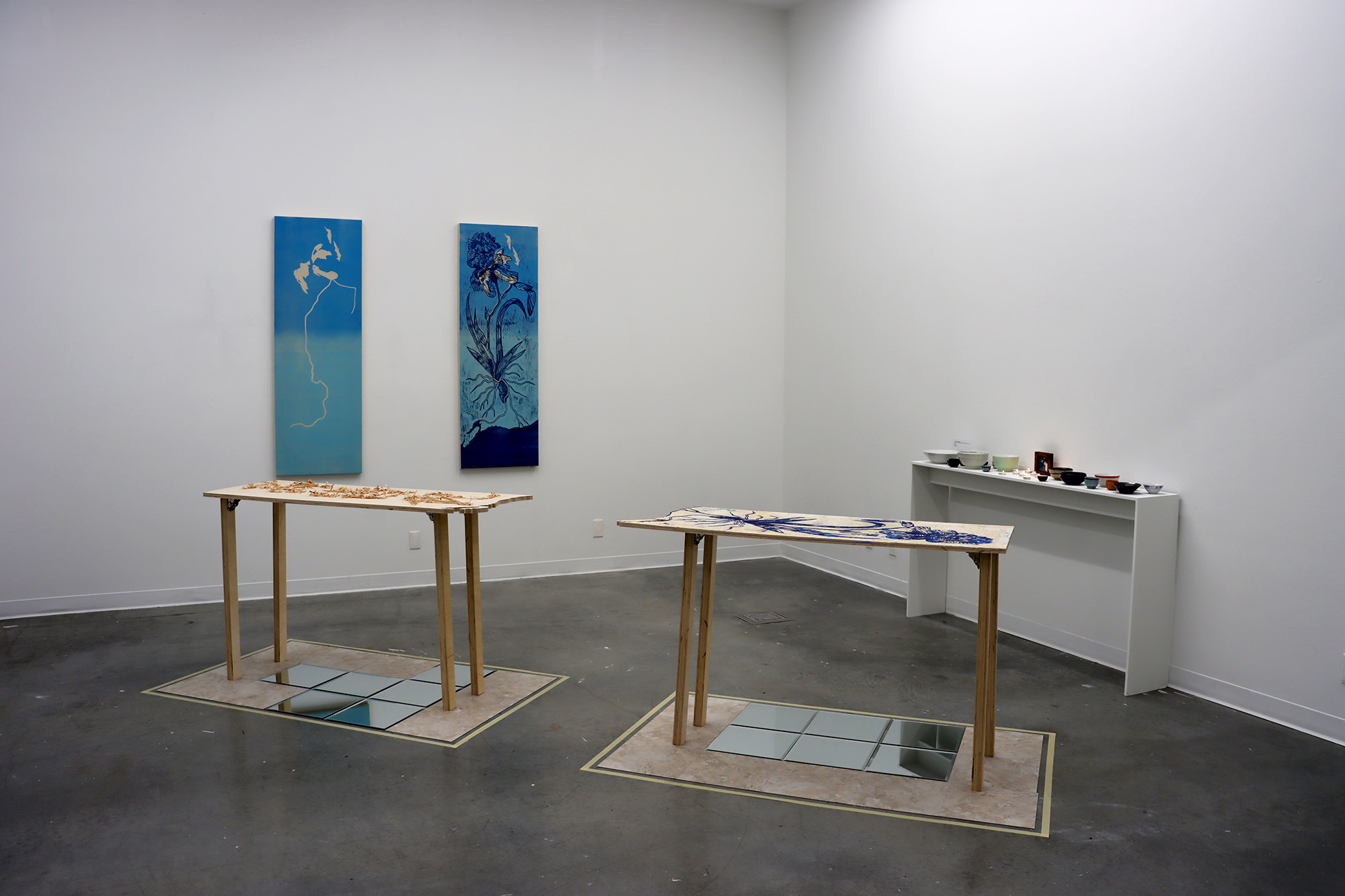
An Ethic Is A Root, 3/4 view of art installation with altar
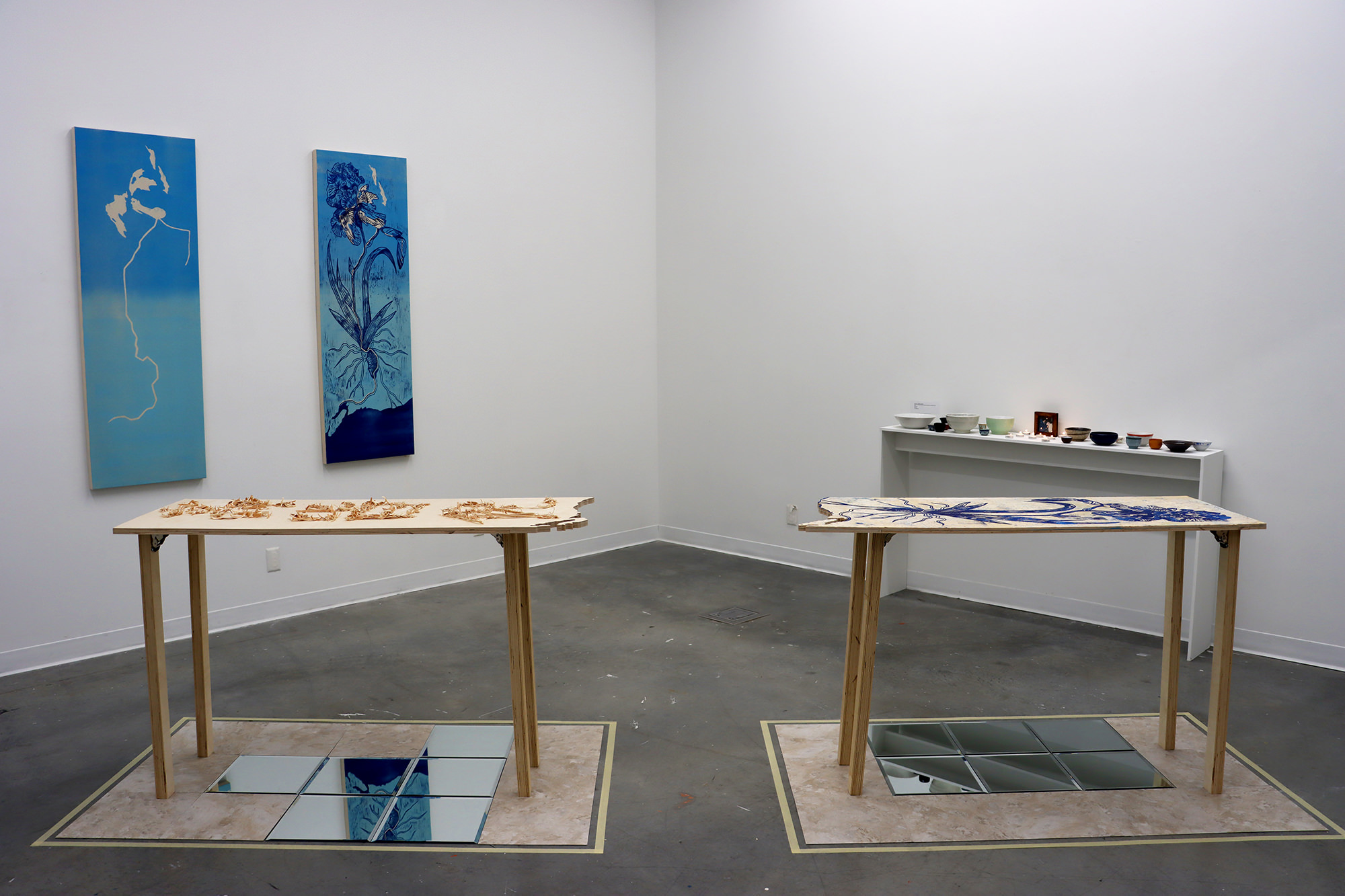
Beyond Measure, woodcut tables central in installation

Beyond Measure, table with woodblock prints reflected in mirrored floor tiles
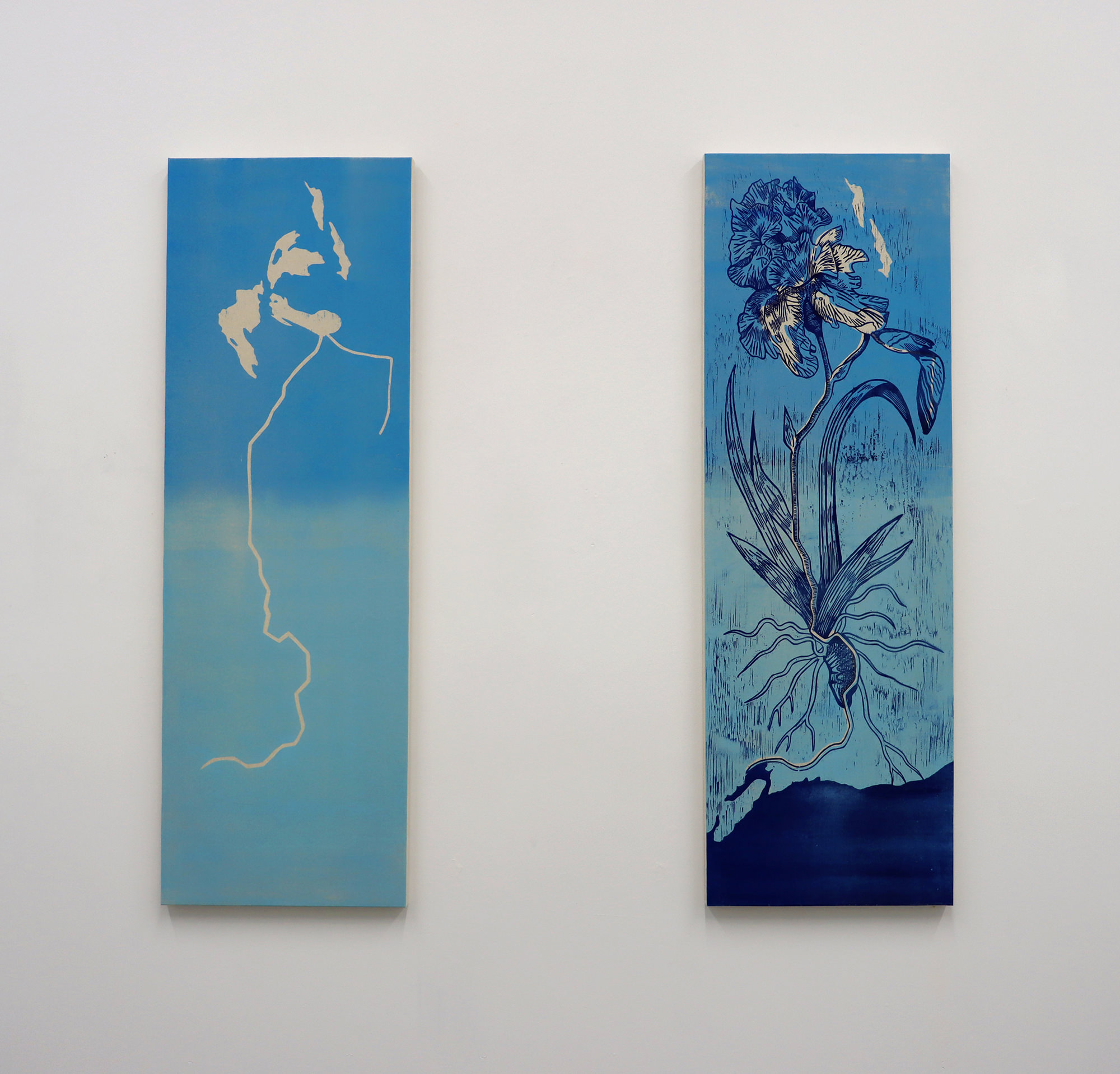
Two woodblock prints. On left: My Migration Route. On right: Iris Roots Clean Th Water.

Beyond Measure: woodcut table with iris woodblock on top surface and map of my migration route on bottom surface, reflected in mirrored floor tiles.
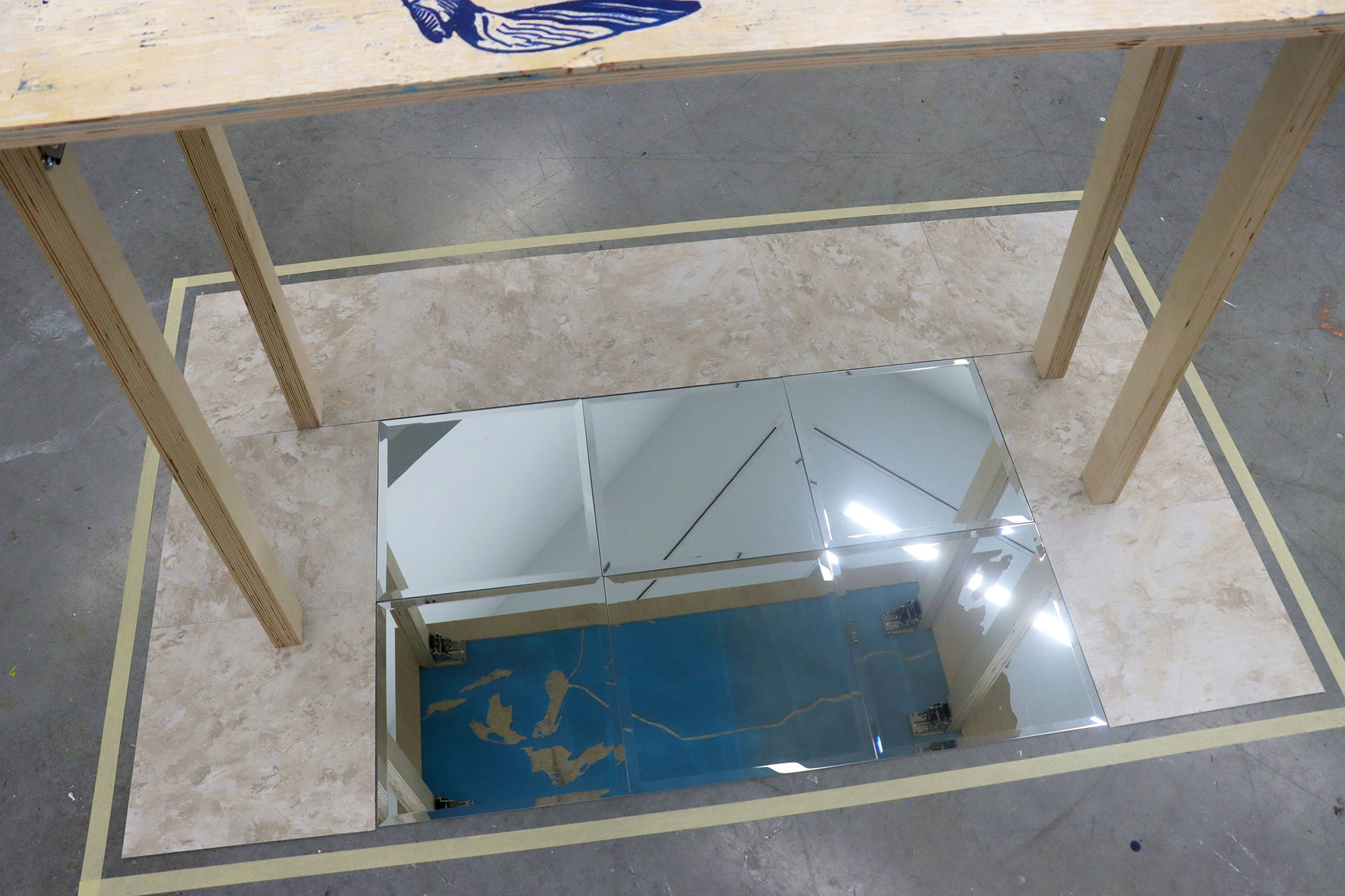
Beyond Measure: woodcut table with iris woodblock on top surface and map of my migration route on bottom surface, reflected in mirrored floor tiles.
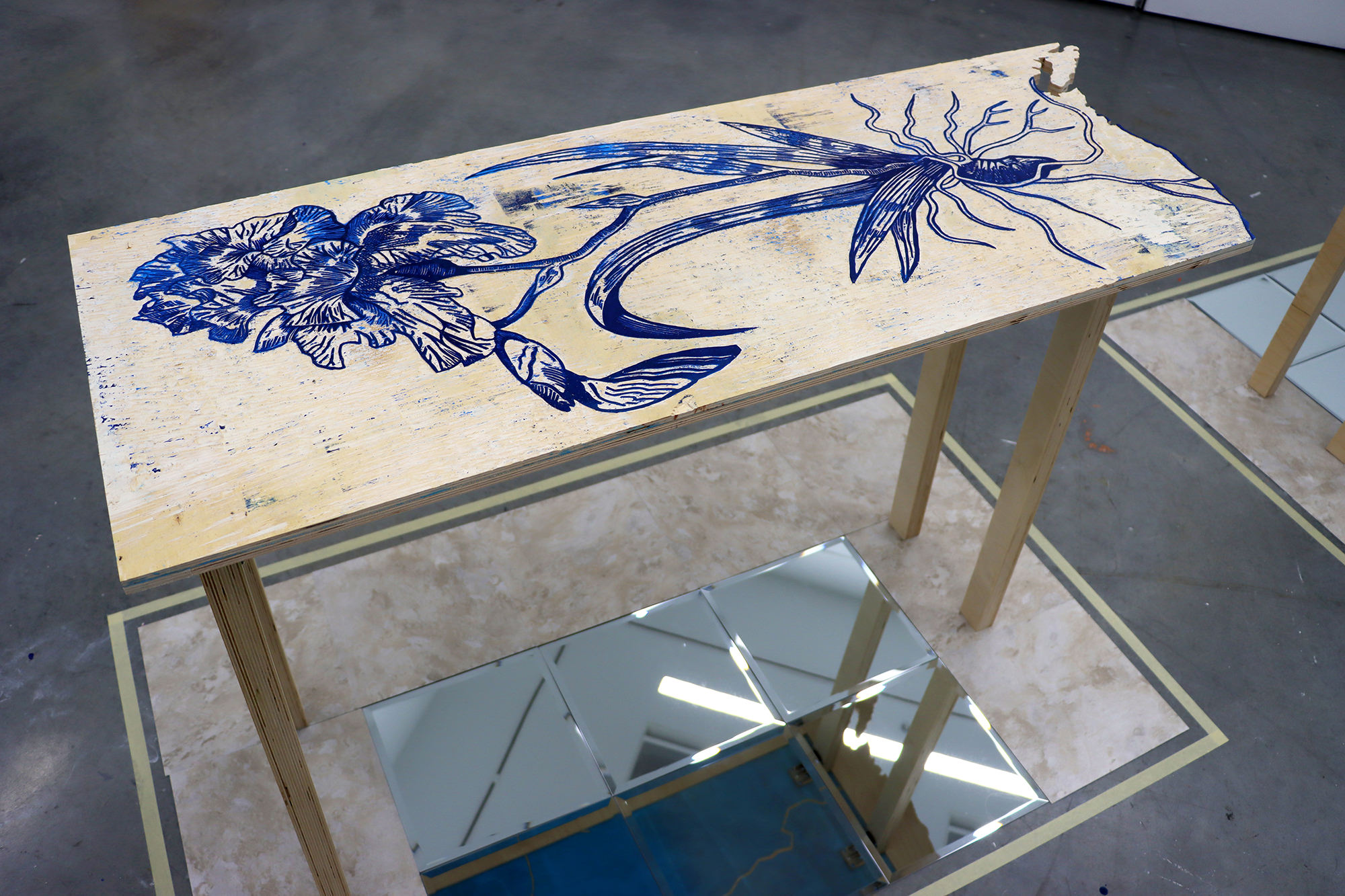
Beyond Measure: woodcut table with iris woodblock on top surface and map of my migration route on bottom surface, reflected in mirrored floor tiles.

Beyond Measure: table with wood shavings formed in the characters of the artist's name in Chinese.
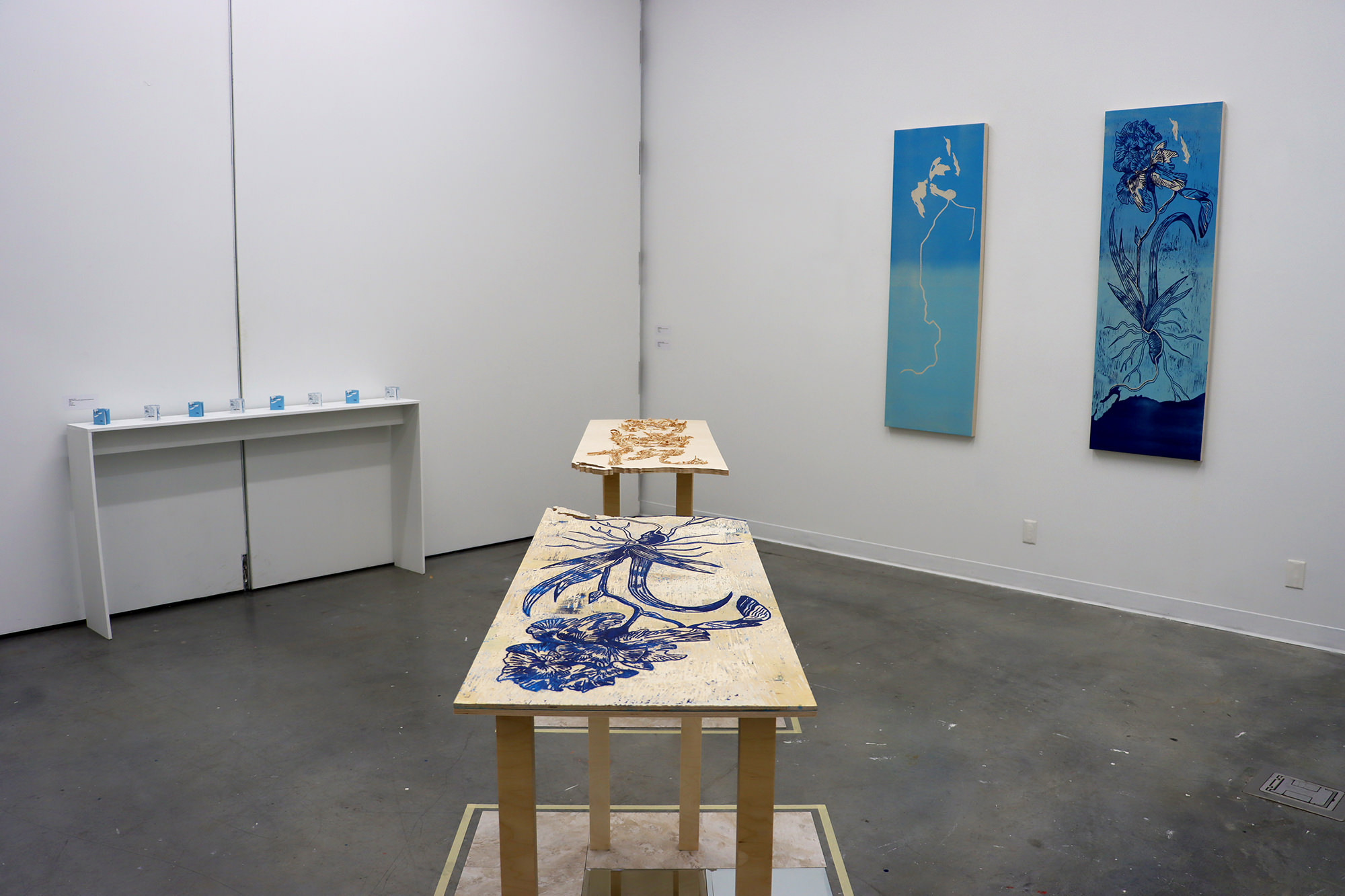
Installation view with two woodblock prints, tables, and artist's books.
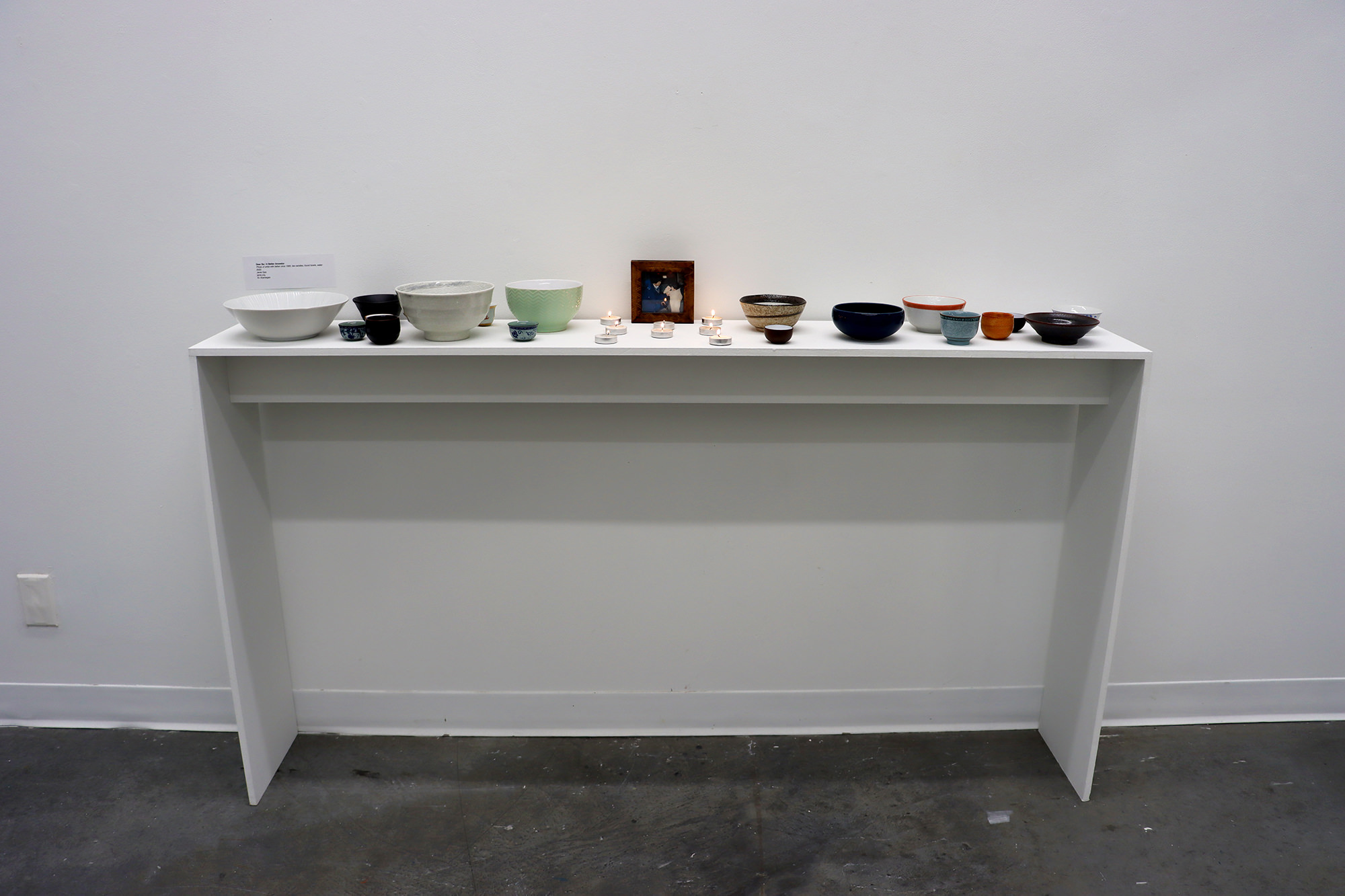
Altar to the artist's father, childhood photo of artist and father in center, 8 tea candles, bowls of water on each side of the table framing the photo.

Close-up of altar to the artist's father, childhood photo of artist and father in center, 8 tea candles, bowls of water on each side of the table framing the photo.
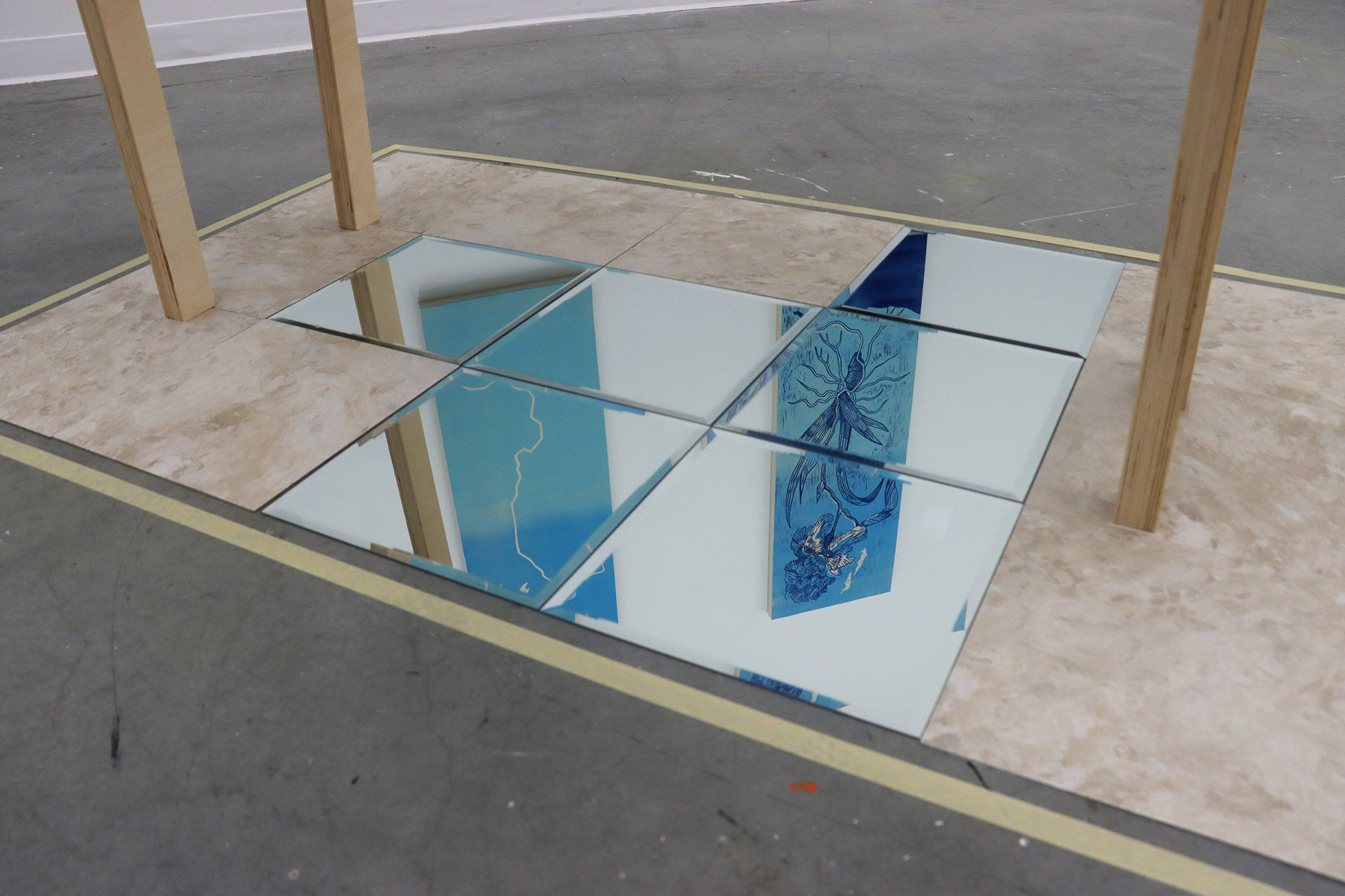
Close-up of mirrored floor tiles reflecting the woodblock prints on the wall.
Title: An Ethic Is A Root
Medium: woodcut prints on raw muslin canvas and stretcher bars, Baltic birch woodblock tables (folding), wood shavings, bowls sourced from retail stores in Vancouver Chinatown, artist's books, vinyl floor tiles, mirrored floor tiles, tape
Dimensions: tables 20" w x 56" l x 34" t, prints 60" x 30" each, installation footprint 15' x 3'
Photographer of installation: Jenie Gao